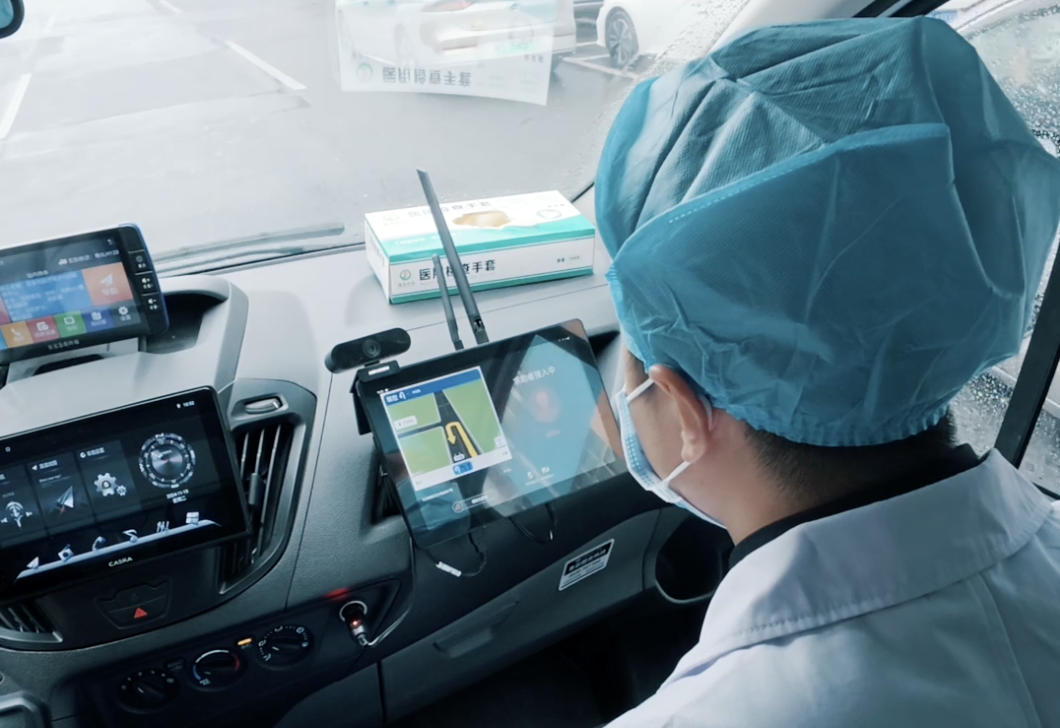Every Second Counts: The Video Ambulance That’s Saving Lives
A man suffers a cardiac arrest and collapses at work. His colleagues frantically call for an ambulance but the closest one is 16 minutes away. In the meantime, no one in the office knows how to administer first aid. Everyone feels helpless and stressed.
This is the kind of situation that could happen anywhere. Now, though, the emergency response center has provided remote support through Tencent First Aid Assistant. After confirming an ambulance is on the way, dispatchers send a text message to the caller. It’s got a link to a live video call with a doctor.
Lifesaving action while help is en route
On the video call, the doctor guides the man’s colleagues through the situation. He can see the workplace environment and, noticing objects around the man’s head that might obstruct his breathing, asks his colleagues to clear them away. He then demonstrates how to correctly perform CPR to try and revive him.
Although no medical personnel were around, these actions, performed quickly, restored the man’s heartbeat and breathing before paramedics arrived, fostering a full recovery.
This emergency unfolded in the Chinese city of Dongguan, but it could happen anywhere. The moments before professional help arrives can mean the difference between life and death. Now, people without medical skills can use an innovative video ambulance system on Weixin to make the ultimate difference.
What minutes mean
In emergencies, every second is vital not just to saving a life but also to ensuring longer-term health. According to the International Federation of Red Cross, seven out of 10 cardic arrests happen in the presence of other people, yet less than 20 percent of them end up performing first aid. Improving that percentage could have an incredible impact: Every minute that passes before the arrival of emergency services equals a 10 percent lower chance of surviving. Unless, that is, someone intervenes.
Time matters just as much in other emergencies. Severe bleeding, for instance, can lead to death in under five minutes, but video guidance can guide whoever else is present to apply pressure or create an effective tourniquet. Choking is another lethal killer, with the potential for brain damage or death in less than six minutes. A video-guided Heimlich maneuver can keep a person alive.
Quick action can also reduce complications, underscoring yet again the importance of immediate intervention. With effective action onsite, hundreds of thousands of lives could be saved each year.
The system developed by Tencent and Dongguan directly addresses this gap, turning untrained individuals into lifesavers during the critical period before an emergency team arrives.
 People at the scene can initiate a video call with doctors using Tencent First Aid Assistant.
People at the scene can initiate a video call with doctors using Tencent First Aid Assistant.
How the video ambulance system works
Dongguan’s “4-minute first-aid circle” leverages the Tencent First Aid Assistant Mini Program to connect bystanders, ambulances, hospitals, doctors, and first aid volunteers into a seamless network. Here’s how it works:
1. A person dials 120 (the equivalent of 911 or 999 in some countries) from a mobile device: Dispatchers assess the situation and send a text link to the caller.
2. Start a video call: The link connects the caller with a doctor in the emergency network.
3. Get real-time guidance: Doctors provide clear, step-by-step instructions, such as how to do CPR, stop bleeding, or dislodge a blockage.
The Tencent First Aid Assistant enhances this process by enabling communication across all parties in the emergency response system. Through its integration, ambulances, hospitals, and volunteers synchronize for the most effective possible response.
 Doctors provide remote support in an ambulance.
Doctors provide remote support in an ambulance.
Real-life applications
A tourist collapsing in a local market can leave witnesses confused about how to help, but a video link could transform helplessness into effective first aid.
In rural areas, where ambulances may have further to travel and take longer to arrive, the system can guide families to help stabilize a patient.
It’s part of global efforts to find innovative ways to harness technology for societal good. Sweden, for example, uses drones to deliver defibrillators to cardiac arrest victims. Dongguan’s system complements these advancements by adding live medical guidance that complements emergency care.
90,000 video interventions to date
In the eight months since the program launched in May 2024, Dongguan’s system has handled more than 10,000 video-guided emergencies. Adoption in more cities has expanded its reach, with over 1.1 million emergency calls and 90,000 video interventions so far in the pilot areas.
The model’s adaptability makes it a scalable solution for improving pre-hospital emergency care worldwide, particularly in low-income countries with limited healthcare and emergency response systems.
Dongguan’s video ambulance system demonstrates how technology can bridge critical gaps, transforming smartphones into life-saving tools. Emergencies happen. This innovation ensures that help is just a call — and a video link — away.


